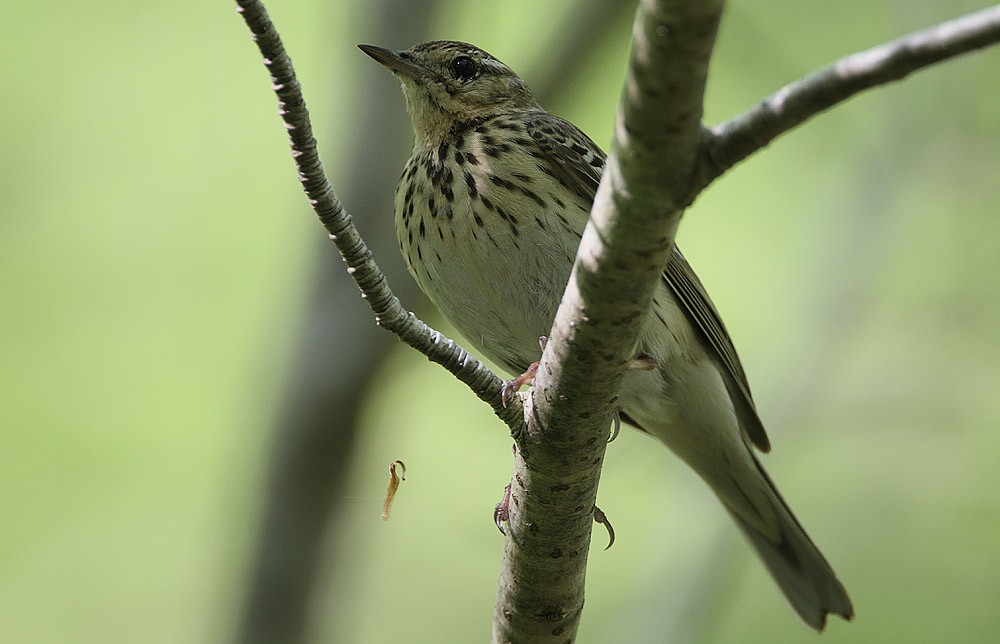Tree Pipit
A species of Pipits Scientific name : Anthus trivialis Genus : Pipits
Tree Pipit, A species of Pipits
Botanical name: Anthus trivialis
Genus: Pipits
Content
Description General Info
 Photo By Steve Garvie , used under CC-BY-SA-2.0 /Cropped and compressed from original
Photo By Steve Garvie , used under CC-BY-SA-2.0 /Cropped and compressed from original Description
The tree pipit (Anthus trivialis) is a small passerine bird which breeds across most of Europe and the Palearctic as far East as the East Siberian Mountains. It is a long-distance migrant moving in winter to Africa and southern Asia. The scientific name is from Latin. Anthus is the name for a small bird of grasslands, and the specific trivialis means "common", from trivium, "public street". This is a small pipit, which resembles meadow pipit. It is an undistinguished-looking species, streaked brown above and with black markings on a white belly and buff breast below. It can be distinguished from the slightly smaller meadow pipit by its heavier bill and greater contrast between its buff breast and white belly. Tree pipits more readily perch in trees. The call is a strong spek, unlike the weak call of its relative. The song flight is unmistakable. The bird rises a short distance up from a tree, and then parachutes down on stiff wings, the song becoming more drawn out towards the end. The breeding habitat is open woodland and scrub. The nest is on the ground, with 4–8 eggs being laid. This species is insectivorous, like its relatives, but will also take seeds. 
Size
15 cm
Colors
Brown
Yellow
Gray
White
Life Expectancy
8 years
Nest Placement
Ground
Feeding Habits
Tree Pipit primarily consumes insects like weevils, beetles, caterpillars, and ants, along with spiders, seeds, and berries, showcasing an omnivorous diet. Its foraging typically involves hunting on the ground, displaying unique preferences or adaptations in line with its terrestrial feeding habits.
Habitat
The tree Pipit resides in open woodlands and heathland with access to glades and near streams. Their preferred environments feature moderate grazing and sparse canopy, including oak and birch woodlands, which facilitate clear visibility. Geographically, these birds inhabit terrain from lowlands to high mountainous regions, including edges of woods and montane grasslands. During migration and non-breeding periods, they utilize similar habitats, as well as open areas like savannas and forest clearings.
Dite type
Insectivorous
General Info
Feeding Habits
Bird food type
Sounds
Call
Recording location: Netherlands
Song
Recording location: Belgium
Song
Recording location: Netherlands
Species Status
They breed in habitats with a wooded component, including Lowland heath and coppice. They are found mostly in open birch woodland on the boundary with moorland, or open structured oak woodland – therefore heavy thinning is required to produce a gappy character. They prefer low canopy medium-sized trees, where there is low-growing scrub and bramble less than 2 metres high, so that horizontal visibility is relatively high. They like a mosaic of grass and bracken, but not very grazed short turf, so light to moderate grazing is preferred. Glades are also valuable, and streams are preferred. Once they have arrived they nest on the ground amongst grass or heather tussocks. They forage on invertebrates found in the ground vegetation. They need scattered trees as song perches. 